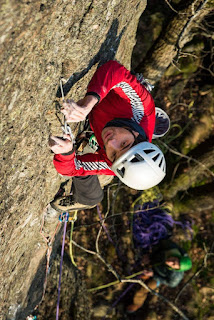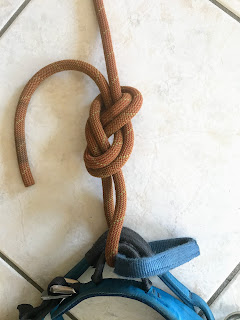Good pro, bad pro, and real pro
Is that piece of pro good or bad? It´s never that simple.
As an instructor and as an experienced climber, you know that solid gear is crucial to climbing safely. If the nut holds, you are fine. If not, you are in deep trouble, regardless of how expensive your shiny new rope is.
So we spend a lot of time trying to convey the importance of perfect gear. Full contact between nut and rock, bomber rock quality, no walking cams... You know the drill.
This is all basic and vital knowledge. And it remains true that all gear must be bomber, so long as we are building top rope anchors. If we cannot find three bomber placements, we should simply pack up and find another route, or go home. It´s really that simple.
 | |
|
In lead climbing, however, the waters become muddier. Suddenly, we are in the land of "not great but good enough", "place that nut and move on before pump sets in", "its a crappy little nut but maybe it will at least slow a fall" or "it´s a great psychological piece". In other words, we do place poor gear. We do it all the time. And even when the gear is good-ish, how wide is that window really? How bad can the gear be and still be "okay".
So, we see that what at first seems like a clean-cut yes/no question, in reality becomes a real bastard. The problem is not only relevant for hard-core trad masters. My students often encounter these decisions on their very first practise lead. At this point, however, you (the instructor) will be on a fixed rope next to them making intelligent, reassuring sounds. So what do you say about sub-optimal placements?
Let me suggest at least a few ideas.
Test your limits
Test that questionable piece. It´s the only truth you will get. With an appropriate backup (like a top rope with some slack), try falling on what you might consider marginal placements. See what works and what does not. I, personally, often find that gear that I do not really trust actually holds. (Aid climbing will also help you learn some useful tricks for improving crappy pro, but body-weight is not the same as a dynamic fall.)Find comfort
When leading, before you start placing gear, make sure you are in the most relaxed position possible. This will buy you time to search for the best options. Switch hands to try and rest. Trust that foot. Keep your head cool. You have more time than you think.
As good as it gets
If you have decided to place pro, never move on until you have made the best of what Mother Earth has offered. Try everything. Bigger nuts, smaller nuts, nuts placed sideways, cams rotated either way, off-sets... You will be surprised at how some sneakiness and persistence can pay off. In the end, you may not get an absolutely bomber piece. But you will get the most out of the placement, and that´s all you can ask for.Keep cool and keep climbing
Sometimes the crack you hoped would take gear turns out to be a flaring... nothing. If your previous piece was solid, and continued climbing seems to be safe enough, consider committing to a run-out. You should have a plan, preferably based on some hope of good pro a bit further up. If you already placed gear, leave it even if it is not very good. Poor gear will sometimes hold a fall.
Learn to ignore sketchy gear placements and use your energy elsewhere. Seems easy when you are getting psyched on the ground. It´s hard once you are up there at the pointy end.
 |
| On the Norwegian classic Hägar, Nissedal. |
Know when to give up
If you just cannot get an acceptable piece in, and continued climbing could result in a dangerous fall, consider calling it a day. Downclimb if you can. If the piece seems good enough for resting on, do that. Sometimes, this will open your eyes to new possibilities, or even give you the mental or physical fortitude to climb on.
If you are on a ledge where you can endure for some time, and neither climbing or downclimbing are options, ask for a rescue. This happened to me once, in the Australian trad paradise Arapiles. I had done a run-out, reached a big comfy ledge with ground-fall potential, but found no gear. I was ten meters above jagged rocks. I lost my nerve. Friendly climbers ran to the top of the crag and passed me a rope. A lot of people thanked me afterwards for not being too stupid or too proud to bail. Australians love a good sand-bag, but they hate seeing fellow climbers smashed against rocks. Good people, they are.
Let´s admit that gear is not always good, and let´s not be afraid to talk about it. Test placements, ask for advice, get your second to always give you feedback. Perfecting gear placement is a journey that never ends.



Comments
Post a Comment